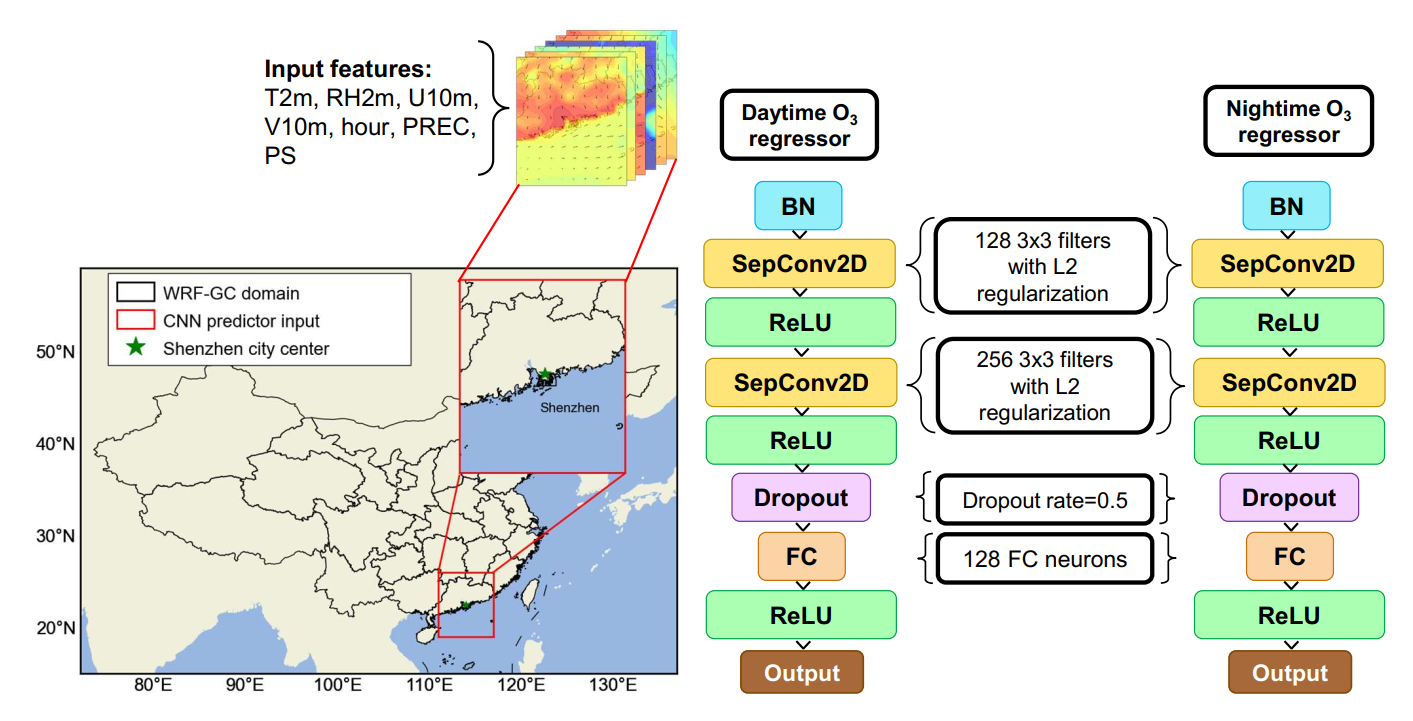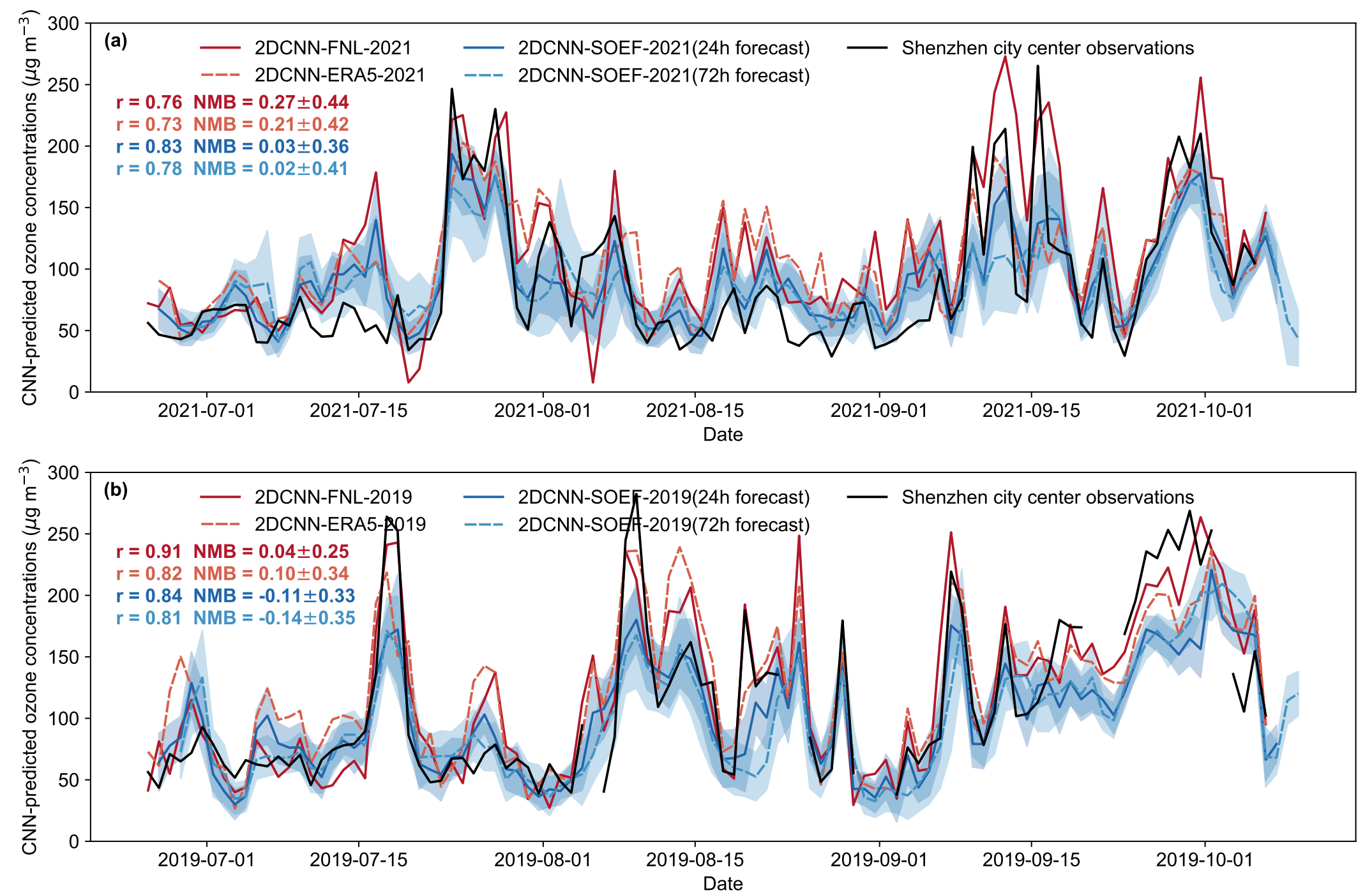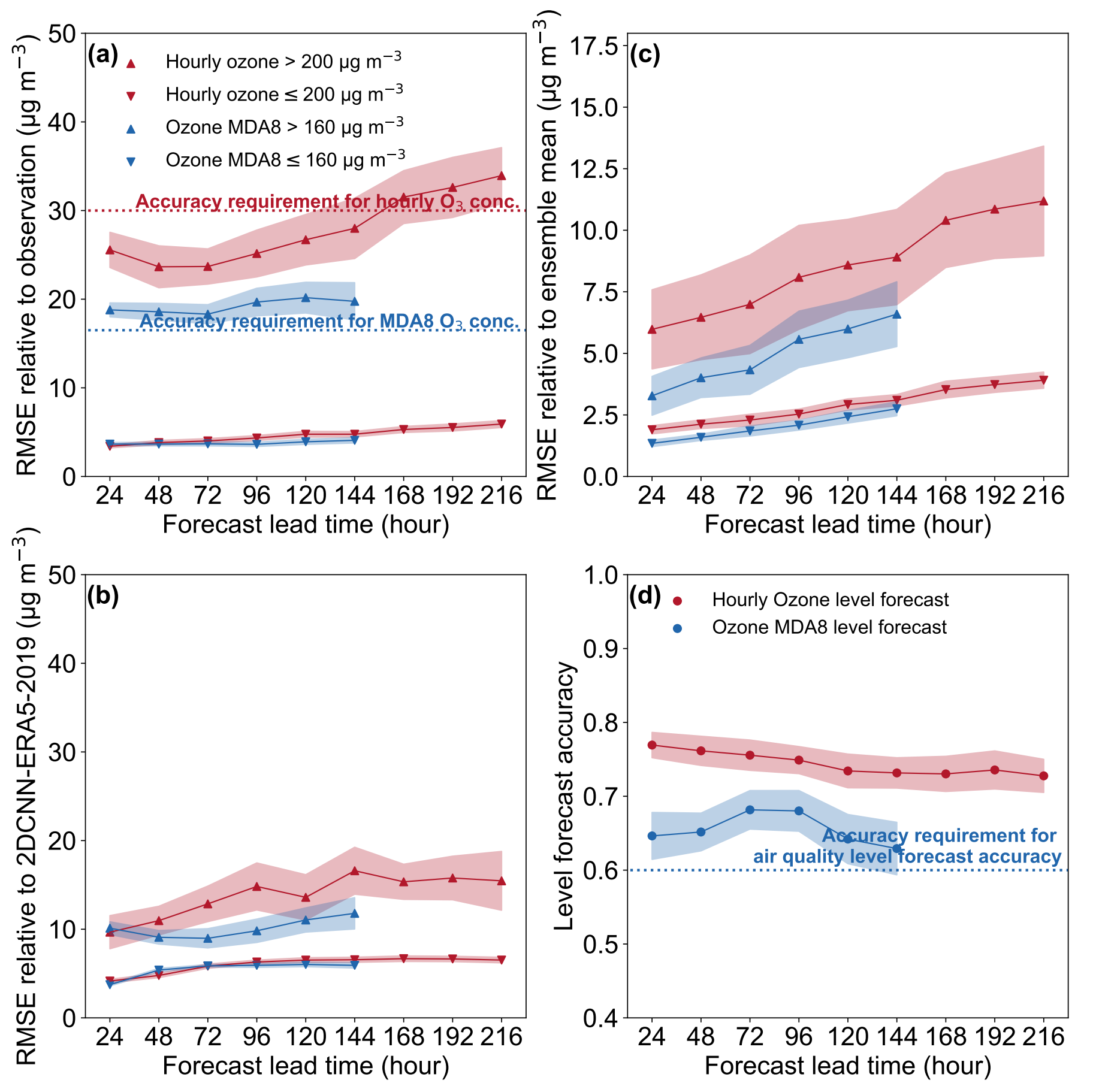Surface ozone concentrations have been rising over most parts of China, posing great risks to public health. At present, the forecasts of surface ozone concentrations are still highly uncertain, and one of the sources of that uncertainty is the uncertainty associated with weather forecasts. However, the impacts of the uncertainty of weather forecasts on surface ozone forecasts have not yet been quantified in daily operations.

Professor Tzung-May Fu’s research group from the School of Environmental Science and Engineering at the Southern University of Science and Technology (SUSTech) and National Center for Applied Mathematics Shenzhen (NCAMS) recently published an article that introduces the development of a deep-learning ozone ensemble forecast model and its application in the predictability analysis of surface ozone pollution in Shenzhen.
Their work, entitled “Deep Learning-Based Ensemble Forecasts and Predictability Assessments for Surface Ozone Pollution,” has been published in Geophysical Research Letters, a top journal in the field of Earth Science.

Figure 1. Schematic of the 2DCNNs trained with WRF-GC simulated meteorological fields and surface ozone concentrations.
Using the 2-dimensional convolutional neural network (2DCNN) framework, the researchers developed a deep-learning surface ozone ensemble forecast system (2DCNN-SOEF). The 2DCNN-SOEF system was trained with simulation outputs from the WRF-GC regional meteorology-chemistry coupled model, developed by Prof. Fu’s group. The 2DCNN-SOEF used the spatial distributions of meteorological variables as inputs to predict the surface ozone response to meso- and synoptic scale meteorology in Shenzhen. Figure 2 shows the 2DCNN-SOEF’s 24-hour and 72-hour forecasts of surface ozone concentrations in Shenzhen during the summers of 2019 and 2021. The correlation coefficients between the observations and forecasts exceeded 0.7.

Figure 2. Surface ozone concentrations in Shenzhen at 14:00 local time from the 2DCNN hindcasts and forecasts (color-coded) for the summers of (a) 2021 and (b) 2019.
The team used the 2DCNN-SOEF to quantify the impacts on ozone forecasts due to the uncertainty of weather forecasts using a 50-member ensemble weather forecast. During ozone exceedance events in Shenzhen, uncertainties associated with weather forecasts led to >38% (9.7 μg m-3) of the forecast errors in hourly surface ozone concentrations. The differences between members of the ensemble weather forecasts led to >24% (6.1 μg m-3) of hourly ozone forecast errors.
These ozone forecast errors were driven by uncertainties in weather forecast and were the predictability limit of surface ozone. These errors cannot be eliminated by improvements in the atmospheric chemical mechanisms and the emission inventories in numerical models.

Figure 3. The 2DCNN-SOEF’s performance for hourly (red) and MDA8 (blue) ozone concentrations during the 2019 ozone season as a function of forecast lead time.
The 2DCNN-SOEF forecast performance was comparable to that of regional air quality models and was more time-efficient: a 9-day, 30-member ozone ensemble forecast can be completed within one day. In addition, the 2DCNN-SOEF quantified ozone forecast uncertainty and ozone exceedance probability to better inform air quality management.
The deep learning ensemble forecast framework developed in this study can be extended to the forecasts of other meteorology-sensitive environment risks, providing timely probability forecasts for any location in the world.
Dr. Aoxing Zhang, a postdoctoral researcher of the School of Environmental Science and Engineering at SUSTech, is the first author of this paper. Prof. Tzung-May Fu of SUSTech and NCAMS is the corresponding author.
This research was supported by the Guangdong Basic and Applied Basic Research Foundation, Shenzhen Key Laboratory of Precision Measurement and Early Warning Technology for Urban Environmental Health Risks, Shenzhen Science and Technology Innovation Commission, Shenzhen Science and Technology Program, and the Guangdong Province Major Talent Program. The computing resources were provided by the Center for Computational Science and Engineering at SUSTech.
Paper link: https://agupubs.onlinelibrary.wiley.com/doi/full/10.1029/2022GL102611
To read all stories about SUSTech science, subscribe to the monthly SUSTech Newsletter.
Proofread ByAdrian Cremin, Yingying XIA
Photo By